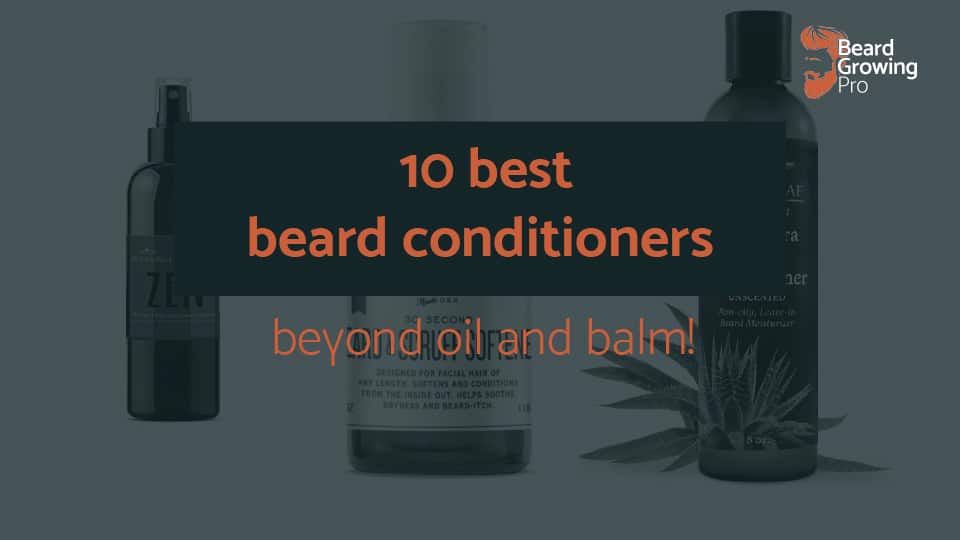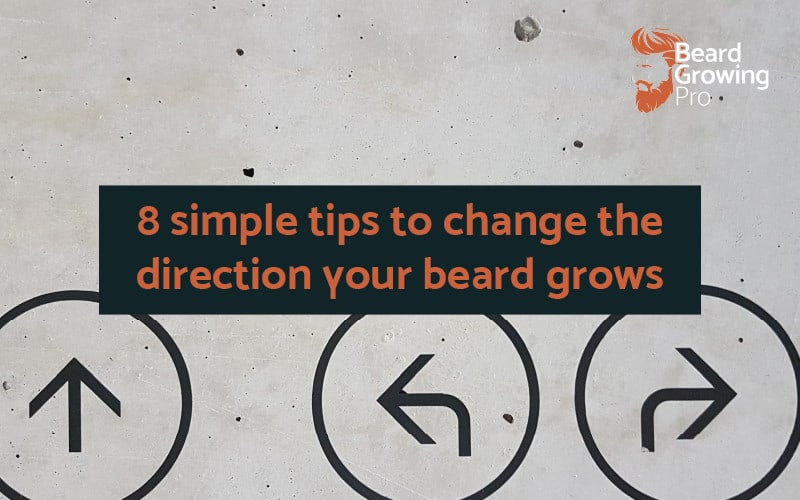Beards are wild by nature, and you may be noticing that a number of your beard hairs curl upwards. You may have them sporadically located over your entire face, or you may notice that you have a particular area of your beard where the beard hairs curl upwards. No matter where they are on your face, having your beard curl upwards is frustrating.
Your beard hair may be curling upwards because your genetics dictate that your beard hairs grow at an acute angle relative to the surface of your skin. Dryness from sun damage can also increase the number of beard hairs that are curling upwards
There are several reasons why your beard hair may be curling upwards and, in this article, we will look at the most common reasons and the appropriate steps you can take to remedy each one.
Genetics is the primary reason why your beard curls upwards
Ultimately, it is your genetics that determines how curly your beard is. Your genes are set in stone from birth and will dictate every part of your beard’s shape, colour, growth patterns, follicle density, and more.
There is nothing you can do to fight your genetics at the moment. Your particular beard growth and shape means that your beard is unique to you. Understanding the strengths of your beard and working with them will be one of the best ways that you can relax and enjoy growing your beard.
Trying to grow a thick full beard with low hair density will mean that you always feel like your beard is lacking. Working with your beard and not against it will mean a greater sense of satisfaction and style throughout your beard growing journey.
1. Angle of growth
Your growth angle will determine the shape of the beard hair and how much it curls as it grows.
A theory states that the more perpendicular the growth is to the surface of the skin, the straighter the beard hair will grow.
People with hair follicles that sit at an acute angle to the skin’s surface are likely to experience curly hair is and more incidents of ingrown hairs.
Growing your beard so that it is longer will help you combat any shortcomings due to the angle of growth. The further you can grow the hair away from the skin’s surface, the more opportunity you have to train its growth into a direction that is more favourable for the style you are aiming for.
2. Texture of hair
The genetics you are carrying will dictate the shape of your hair follicle. This shape will, in turn, also tell you exactly how curly your beard will end up.
Your ethnicity also plays a huge role in the type of beard texture that you will grow. As a sweeping broad statement, the middle eastern ethnicities can grow fantastic beards, as can people of Indian, Italian, and Hungarian descent.
You may also find that beard hair feels different on different parts of your face. That is because the cross-sectional area of the hair will change depending on where on the face you find it.
Here are the types of beard structures that exist and are strongly aligned with genetic heritage:
- fair and straight – hair follicles that grow perpendicular to the skin’s surface means that the hair does not have any torsional or growth strains as it is growing. This hair type is typical of straighter beards found in men of Asian descent.
- Wavy beard hair – it is common for people of Caucasian descent to have wavy beards. The hair follicle is not completely perpendicular to the skin’s surface, which has a cross-section with a semi-oval shape.
- Coiled and curly beards – people of African descent will typically have a more curly and coiled beard than other nationalities. The hair follicle sits more parallel to the skin’s surface, and the hair is more of a flat oval in cross-sectional shape.
3. Sleeping
Sleeping is a very important part of looking after our health. If you are an adult between 18 to 60 years old, you need approximately seven or more hours per night.
An adult human head can weigh anywhere from 3.6 kg up to 5.4 kg. It accounts for approximately 8% of your body mass. With all of that pressure pressing down on your beard and, potentially, twisting and bending the beard hairs, could it cause any issues with your beard growth?
There is no doubt that my beard looks worse in the mornings after I have slept on it. It is easy enough to use water and light heat treatment to get the beard to fall back into the right place. Your beard may be curling upwards in the morning because of the pressure of sleeping on it.
4. Wearing a face mask
In today’s Covid world, wearing a face mask is becoming increasingly common. If you work in a customer-facing role, you will likely have to wear a face mask for most of the day. Wearing a face mask could wreak havoc with your beard.
The beard hair trapped under a face mask is also likely to be situated in high humidity and elevated heat. The extra humidity and heat come from the moisture and heat of your breath.
The face mask could be slowly heating up your hair and creating a slightly damp environment throughout the day. The damp environment combined with the heat can easily cause certain parts of your beard hair to become curled upwards.
Also, I have found that any beard hairs trapped under the elastic of a face mask can also become curled upwards after wearing the mask for only a couple of hours.
Undoing the damage caused by wearing a face mask is relatively easy. Lightly spraying the beard hair with water and using a heat treatment such as a heated beard brush or a hairdryer can force the hair back into the right shape.
5. Sun damage
Sun damage is particularly horrible for beard hairs.
Sun damage potentially happens on only one side of your beard hair and can easily cause cuticle damage to that side of the beard hair.
If the beard hair is not weathered evenly, it can easily cause it to curl and twist in asymmetrical and unpredictable ways.
UV rays create free radicals in the beard hair, which can cause deep and irreversible damage to the beard.
Using a UV protector spray on your beard before heading out into the sun is the best way to protect your beard from sun damage.
6. Dryness
I find that my beard is particularly curly and curls upwards when it is dry.
Because I live in a hot and dry environment, I must keep up with my hydrating routine. My hydrating routine includes using a beard balm, butter, and another leave-in conditioner regularly.
Keeping your beard well hydrated will help combat any issues you have with your beard becoming tangled, pointing straight up and will also make it a lot easier to comb and maintain.
If you want to know more about the best beard conditioners you can use to rehydrate your drive beard hair check out my other article – the ten best beard conditioners [beyond oil and palm!] – Click here.
7. No combing
Often beard growers think that combing their beard will be able to train it into a certain direction. In my experience, this is not true.
What combing does do, however, is keep the beard hairs smooth by mechanically removing any dirt and grime which may get into your beard throughout the day, and it also helps flatten the cuticles.
By not combing your beard regularly, you are likely to experience tangling and knot formation. The formation of knots and tangles in your beard can easily cause it to become wild, unruly, and curls upwards.
Curling every day with a dedicated well-manufactured beard comb will help you keep the unruly nature of your beard in check.
How to stop your beard curling upwards
Stopping your beard from growing upwards is relatively simple, and it relies on doing small activities regularly rather than fixing it all in one go. If you include some of these approaches in your regular maintenance routine, you may not see results right away, but you will slowly see the benefits with time.
- Grow it longer – growing your beard hair longer will cause it to weigh more which can eventually help the beard find its downwards trajectory.
- Heat treatment – using a hot hair dryer or heated beard comb, you will brush your beard in the direction you want it to grow. Using a heat treatment on your hair modifies the bonds that create the hair shape. Simply heating the hair and holding it into shape modifies the bonds, which changes the hair shape.
- Products with wax – A beard balm with a high wax component may not be enough to hold your beard in a downwards position, but a much higher hold product such as a moustache wax is worth investigating if you struggle to choose the right product.
- Pining – This approach can only be done on beards that are long enough to pin into place. I recommend that you pin the beard hair in the morning before you head out for your day. You can use hairpins on your beard as it dries naturally after a shower and shampoo and condition. You can even get ready for work as the hairpins hold your beard hair in place.
- Beard wraps – If you suspect that your beard is growing upwards because of your sleeping position, you could try wrapping your beard. Your beard can be protected using a beard bandanna while you sleep.
The final word
This article has talked about why your beard curls upwards and all of the approaches you can use to stop it curling in ways that you do not want it to curl.





![7 easy solutions if your beard grows upwards [Tricks]](https://beardgrowingpro.com/wp-content/uploads/2021/11/7-easy-solutions-if-your-beard-grows-upwards.jpg)

